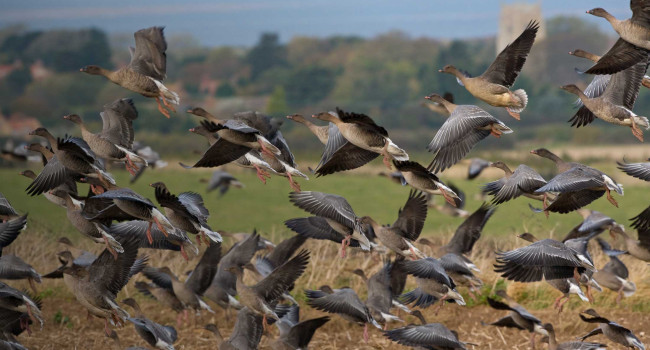Great skua (Stercorarius skua) movements at sea in relation to marine renewable energy developments

Author(s): Wade, H.M., Masden, E.A., Jackson, A.C., Thaxter, C.B., Burton, N.H.K., Bouten, W. & Furness, R.W.
Published: January 2014
Journal: Marine Environmental Research
Digital Identifier No. (DOI): 10.1016/j.marenvres.2014.09.003
Scotland has a target to generate 100% of its energy from renewable sources by 2020. The country therefore has a large number of offshore sites where marine renewable developments (including wind, wave and tidal-stream installations) are proposed or under construction. As any existing developments have only become operational in recent years, and are only few in number, the effect they have on marine ecosystems is not yet properly understood.
Scotland is home to over 60% of the world’s breeding Great Skuas, and principal colonies are protected under the European Birds Directive. Breeding success at many of these sites has been low in recent years and Great Skua numbers have fallen. The effect of marine renewable developments on these internationally important breeding populations could be detrimental, for example if birds fatally collide with wind turbines. It could also be beneficial if, for instance, installations act as fish aggregating devices that provide an abundant and predictable source of prey. A new study by the Environmental Research Institute at the University of the Highlands and Islands, the University of Amsterdam, the University of Glasgow and the BTO has examined these potential effects, using long-life GPS tags to reveal the movements of Great Skuas on Hoy (Orkney) and Foula (Shetland) throughout the breeding season and characterise their use of the marine environment.
The study found that the movements of Great Skuas did not overlap to a great extent with areas of the sea where marine renewable developments are proposed. The largest overlap was with wave power installations, which are thought to pose a low risk to this species. However, the degree of overlap varied throughout the season and between colonies, with birds whose breeding attempts failed ranging over a larger area of sea than birds that were incubating or caring for chicks. Historical records of nest attendance also indicated that Great Skuas travel further during the breeding season than in the past – trips that took half an hour in the 1970s now take up to four hours. This could be linked to declines in sandeel abundance, a key prey species for Great Skuas, due to overfishing and climate change. Taken together, the findings of this study show that assessing the potential impact of marine renewable developments on Great Skuas is complex. This long-lived species uses different parts of the marine environment at different times of the year, and might be flexible in choosing where to go depending on prevailing conditions. Tracking can help to assess the effect of planned marine renewable developments, but long term studies in conjunction with thorough monitoring are essential to fully understand the conservation implications for Great Skuas and other seabirds.








Share this page